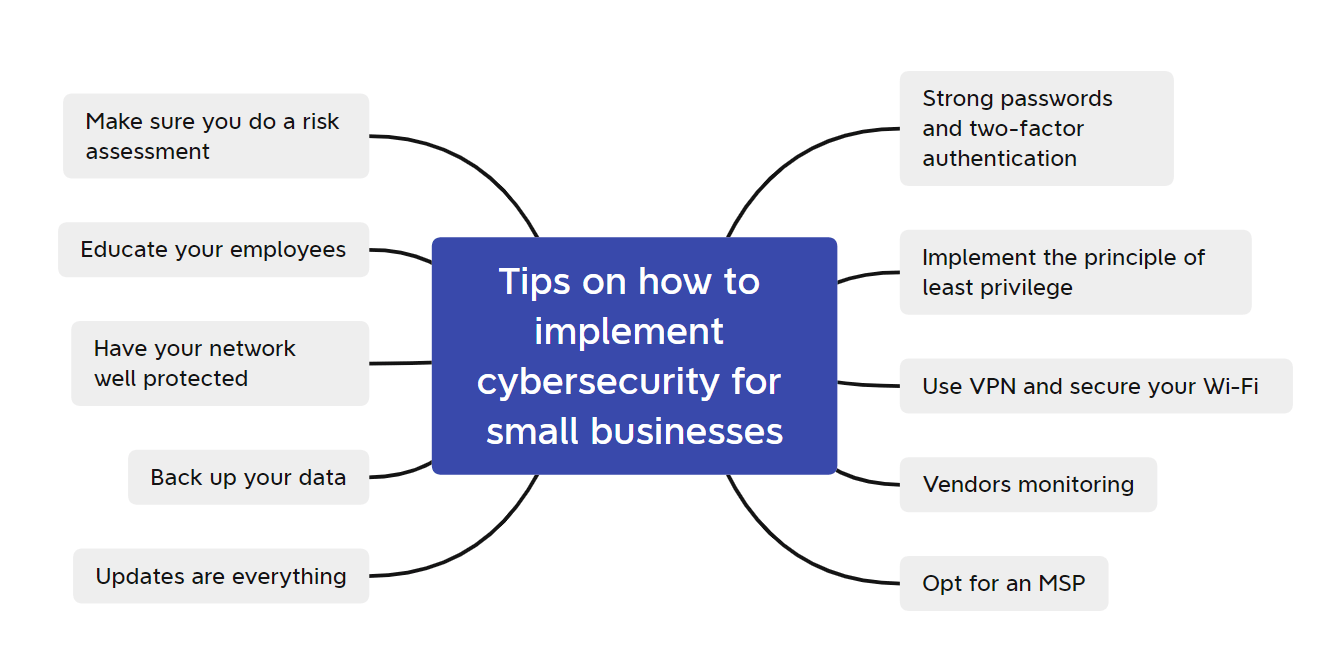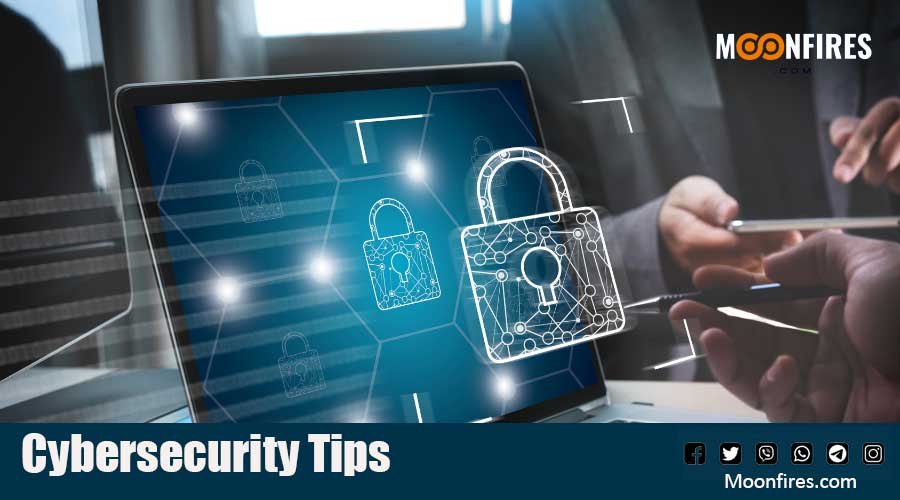In today’s digital age, businesses of all sizes are increasingly reliant on technology to operate efficiently. However, this dependence also makes them vulnerable to cyber threats. A single cyberattack can result in significant financial loss, damage to your reputation, and legal repercussions. To protect your business, it’s essential to adopt a comprehensive cybersecurity strategy. Below is a detailed exploration of 21 cybersecurity tips and best practices that can help safeguard your business against cyber threats.

1. Understand the Cybersecurity Landscape
The first step in protecting your business is to gain a comprehensive understanding of the cybersecurity landscape. Cyber threats are constantly evolving, with new types of attacks emerging regularly. Common threats include:
- Malware: Malicious software designed to damage or disrupt systems, such as viruses, worms, and Trojan horses.
- Phishing: Fraudulent attempts to obtain sensitive information by disguising as a trustworthy entity, often through email.
- Ransomware: A type of malware that encrypts the victim’s data and demands payment for the decryption key.
- Insider Threats: Risks posed by employees or other insiders who may intentionally or unintentionally cause harm.
Staying informed about these threats allows you to anticipate and defend against potential attacks. Regularly review cybersecurity reports, follow industry news, and participate in cybersecurity training programs.
2. Conduct Regular Risk Assessments
A risk assessment is a systematic process of identifying, analyzing, and evaluating risks to your business’s information systems. This process helps you understand where your vulnerabilities lie and what potential impact they could have. Key steps in a risk assessment include:
- Asset Identification: Identify all critical assets, such as customer data, financial information, and intellectual property.
- Threat Identification: Determine potential threats to these assets, such as hacking, malware, and insider threats.
- Vulnerability Assessment: Identify weaknesses in your systems that could be exploited by these threats.
- Impact Analysis: Evaluate the potential impact of a successful attack on your business.
- Risk Mitigation: Develop and implement strategies to reduce these risks, such as installing security software or updating systems.
Conducting risk assessments regularly ensures that you stay ahead of emerging threats and continually improve your cybersecurity posture.
3. Implement Strong Password Policies
Passwords are often the first line of defense against unauthorized access. However, weak or reused passwords can easily be compromised. To enhance password security:
- Require Complexity: Enforce policies that require passwords to be at least 12 characters long and include a mix of uppercase letters, lowercase letters, numbers, and special characters.
- Prohibit Reuse: Prevent users from reusing passwords across different accounts or systems.
- Implement Expiration Policies: Require users to change their passwords regularly, such as every 60-90 days.
- Encourage the Use of Password Managers: Password managers generate and store complex passwords securely, reducing the likelihood of human error.
In addition to strong password policies, consider implementing multi-factor authentication (MFA) to add an extra layer of security.
4. Utilize Multi-Factor Authentication (MFA)
Multi-factor authentication (MFA) significantly enhances security by requiring users to provide two or more verification factors before granting access. These factors typically include:
- Something You Know: A password or PIN.
- Something You Have: A physical token, smartphone, or smart card.
- Something You Are: Biometric data such as fingerprints, facial recognition, or retinal scans.
By requiring multiple forms of verification, MFA makes it much more difficult for attackers to gain unauthorized access, even if they have stolen a password.
5. Regularly Update and Patch Systems
Cybercriminals often exploit vulnerabilities in outdated software and systems. Regular updates and patches are essential to close these security gaps. To ensure your systems are up-to-date:
- Enable Automatic Updates: Configure systems to automatically download and install updates for operating systems, applications, and firmware.
- Patch Management: Implement a patch management process to identify, test, and apply patches to all systems promptly.
- Monitor Vendor Security Alerts: Stay informed about security alerts from your software vendors and apply patches as soon as they are released.
Failing to update and patch systems can leave your business exposed to known vulnerabilities that could be easily exploited by attackers.
6. Encrypt Sensitive Data
Encryption is a fundamental security measure that protects sensitive data by converting it into an unreadable format, which can only be decoded with the correct decryption key. Encryption should be applied to:
- Data in Transit: Ensure that any data transmitted over the internet, such as emails, financial transactions, or remote access connections, is encrypted using protocols like SSL/TLS.
- Data at Rest: Encrypt data stored on servers, databases, and backup media to protect it in the event of a breach.
- Portable Devices: Encrypt data on portable devices, such as laptops, USB drives, and mobile phones, to prevent unauthorized access if the device is lost or stolen.
Strong encryption algorithms, such as AES-256, should be used to ensure the highest level of protection for your data.
7. Backup Your Data Regularly
Regular data backups are essential to ensure that your business can recover quickly in the event of a cyberattack, hardware failure, or accidental data loss. Best practices for data backups include:
- Frequency: Perform regular backups, ideally daily or weekly, depending on the importance of the data.
- Redundancy: Maintain multiple backup copies in different locations, such as on-site, off-site, and cloud-based storage.
- Testing: Regularly test your backup and restore procedures to ensure that your data can be recovered quickly and completely.
- Encryption: Encrypt your backup data to protect it from unauthorized access during storage or transit.
Having a reliable backup strategy ensures that your business can continue to operate even in the face of data loss.
8. Educate and Train Employees
Human error is a leading cause of cybersecurity incidents. Educating and training your employees on cybersecurity best practices is crucial to reducing this risk. Key training topics should include:
- Phishing Awareness: Teach employees how to recognize phishing attempts and the importance of not clicking on suspicious links or attachments.
- Password Security: Emphasize the importance of using strong, unique passwords and avoiding password sharing.
- Data Protection: Educate employees on how to handle sensitive data securely, including encryption and secure file sharing practices.
- Incident Reporting: Ensure employees know how to report potential security incidents promptly.
Regular training sessions, supplemented by simulated phishing exercises, can help reinforce these lessons and create a security-conscious culture within your organization.
9. Implement a Robust Firewall
A firewall is a critical security tool that acts as a barrier between your internal network and external threats. A properly configured firewall can:
- Block Unauthorized Access: Prevent unauthorized users or malicious software from accessing your network.
- Filter Traffic: Control the flow of inbound and outbound traffic based on predetermined security rules.
- Monitor Network Activity: Track and log network activity, allowing you to detect and respond to suspicious behavior.
To maximize the effectiveness of your firewall:
- Regularly Review and Update Rules: Ensure that your firewall rules are up-to-date and reflect the latest security policies.
- Enable Intrusion Prevention Systems (IPS): Many firewalls include IPS features that can detect and block known attack patterns.
- Segment Your Network: Use firewalls to segment your network into smaller, isolated zones, reducing the potential impact of a breach.
Firewalls are a foundational component of network security, and their proper configuration and management are essential for protecting your business.
10. Secure Your Wi-Fi Networks
Unsecured Wi-Fi networks can provide an easy entry point for cybercriminals. To protect your wireless networks:
- Use Strong Encryption: Employ WPA3 encryption, the latest and most secure Wi-Fi encryption standard.
- Change Default Settings: Default SSIDs and passwords are often easy targets for attackers. Change these defaults to something unique and complex.
- Disable SSID Broadcasting: Hide your network’s SSID to make it less visible to potential attackers.
- Create a Guest Network: Set up a separate network for guests, isolating it from your main business network to prevent unauthorized access.
Securing your Wi-Fi networks helps protect against unauthorized access and reduces the risk of a cyberattack.
11. Control Access to Information
Access control is a critical aspect of cybersecurity that ensures only authorized individuals have access to sensitive information. Key principles include:
- Least Privilege: Grant users the minimum level of access necessary to perform their job functions. This reduces the risk of accidental or intentional data breaches.
- Role-Based Access Control (RBAC): Assign access permissions based on job roles, ensuring that employees can only access information relevant to their duties.
- Regular Access Reviews: Periodically review and update access permissions to ensure they remain appropriate as roles and responsibilities change.
By controlling access to sensitive information, you can minimize the potential for insider threats and unauthorized data access.
12. Implement Intrusion Detection and Prevention Systems (IDPS)
Intrusion Detection and Prevention Systems (IDPS) are essential tools for monitoring network traffic and identifying potential threats. These systems can:
- Detect Anomalies: Identify unusual network activity that may indicate an attempted attack.
- Prevent Attacks: Automatically block or mitigate threats before they can cause damage.
- Generate Alerts: Notify security teams of potential security incidents, allowing for a rapid response.
IDPS solutions can be network-based, monitoring traffic across the entire network, or host-based, monitoring activity on specific devices. Implementing both types provides comprehensive protection against cyber threats.
13. Use Antivirus and Anti-Malware Software
Antivirus and anti-malware software are essential for detecting and removing malicious software from your systems. To maximize their effectiveness:
- Keep Software Updated: Ensure that your antivirus and anti-malware software is regularly updated to protect against the latest threats.
- Perform Regular Scans: Schedule regular scans of all systems to detect and remove any malware that may have infiltrated your network.
- Enable Real-Time Protection: Activate real-time scanning to detect and block malware as it attempts to enter your systems.
In addition to basic antivirus software, consider deploying advanced threat detection tools, such as endpoint detection and response (EDR) solutions, to identify and mitigate more sophisticated attacks.
14. Develop and Implement a Cybersecurity Policy
A cybersecurity policy is a formal document that outlines your organization’s approach to protecting its digital assets. This policy should cover:
- Data Protection: Guidelines for handling, storing, and transmitting sensitive data.
- Access Controls: Rules for granting
https://moonfires.com/%e0%a4%a1%e0%a4%be%e0%a4%b0%e0%a5%8d%e0%a4%95-%e0%a4%b5%e0%a5%87%e0%a4%ac/






 If you want to use your preferred UPI app, our UPI ID is raj0nly@UPI (you can also scan the QR Code below to make a payment to this ID.
If you want to use your preferred UPI app, our UPI ID is raj0nly@UPI (you can also scan the QR Code below to make a payment to this ID.






